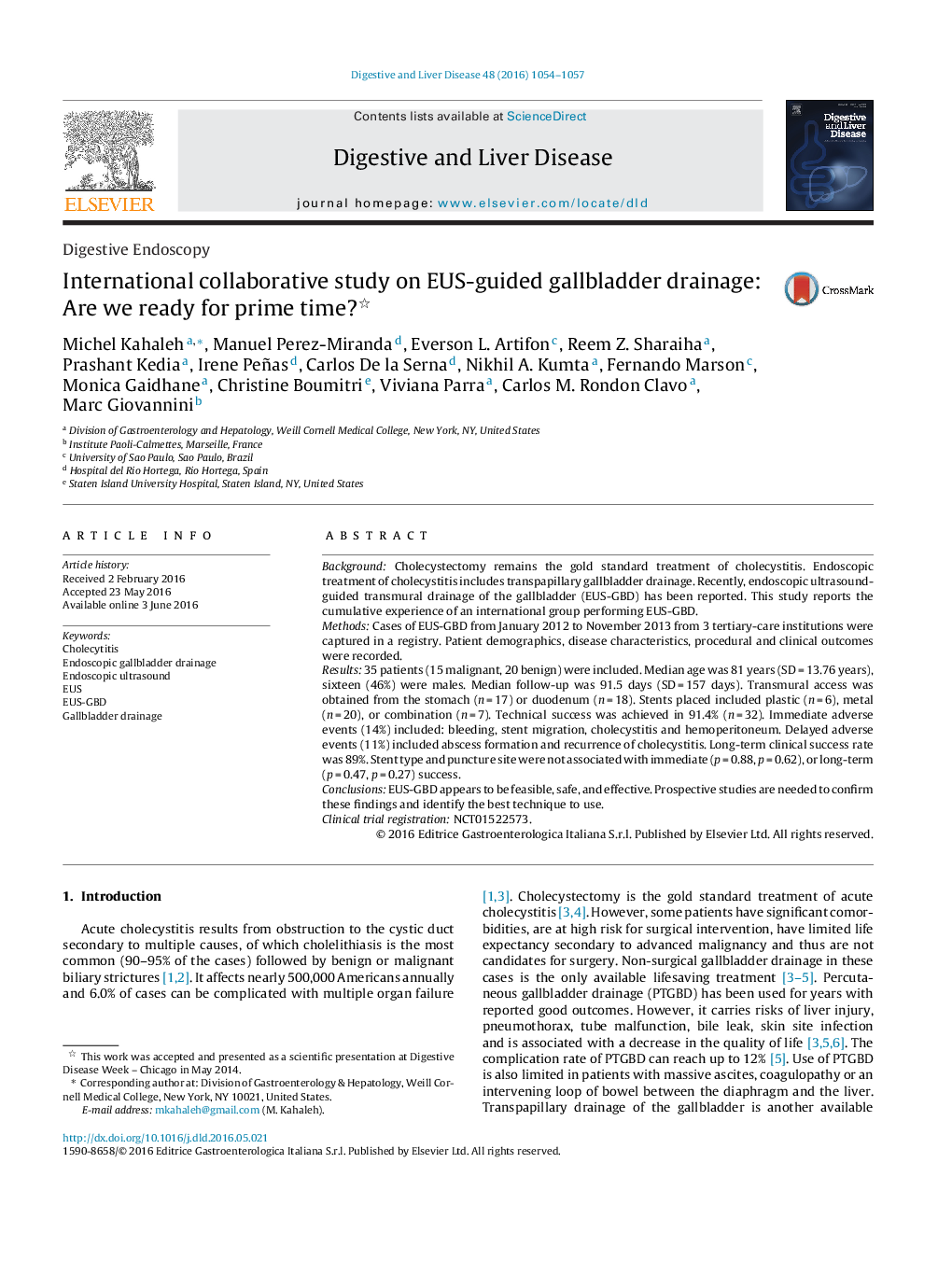| Article ID | Journal | Published Year | Pages | File Type |
|---|---|---|---|---|
| 3261189 | Digestive and Liver Disease | 2016 | 4 Pages |
BackgroundCholecystectomy remains the gold standard treatment of cholecystitis. Endoscopic treatment of cholecystitis includes transpapillary gallbladder drainage. Recently, endoscopic ultrasound-guided transmural drainage of the gallbladder (EUS-GBD) has been reported. This study reports the cumulative experience of an international group performing EUS-GBD.MethodsCases of EUS-GBD from January 2012 to November 2013 from 3 tertiary-care institutions were captured in a registry. Patient demographics, disease characteristics, procedural and clinical outcomes were recorded.Results35 patients (15 malignant, 20 benign) were included. Median age was 81 years (SD = 13.76 years), sixteen (46%) were males. Median follow-up was 91.5 days (SD = 157 days). Transmural access was obtained from the stomach (n = 17) or duodenum (n = 18). Stents placed included plastic (n = 6), metal (n = 20), or combination (n = 7). Technical success was achieved in 91.4% (n = 32). Immediate adverse events (14%) included: bleeding, stent migration, cholecystitis and hemoperitoneum. Delayed adverse events (11%) included abscess formation and recurrence of cholecystitis. Long-term clinical success rate was 89%. Stent type and puncture site were not associated with immediate (p = 0.88, p = 0.62), or long-term (p = 0.47, p = 0.27) success.ConclusionsEUS-GBD appears to be feasible, safe, and effective. Prospective studies are needed to confirm these findings and identify the best technique to use.Clinical trial registrationNCT01522573.
